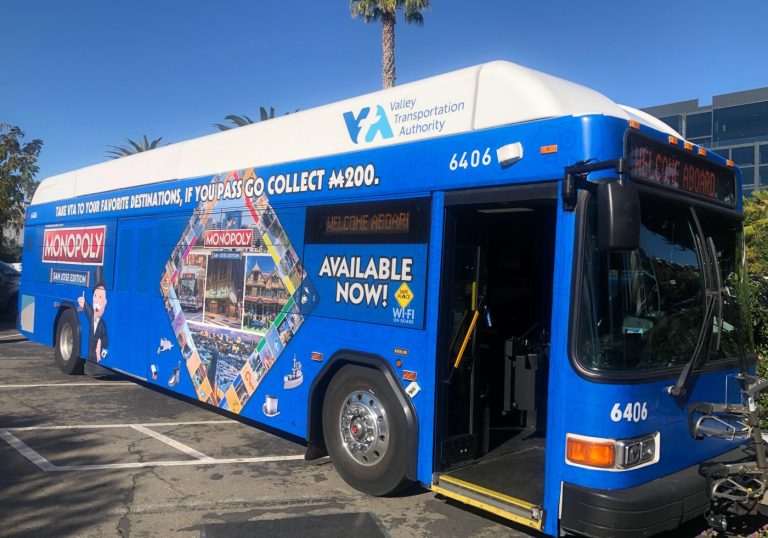First-time freshmen enrollment at several Bay Area universities shrank this fall after errors in the federal financial aid form delayed the processing of hundreds of thousands of applications, new data shows.
Cal State East Bay reported a staggering 20% drop in freshmen enrollment and a 12% drop in total enrollment from last year. San Francisco State experienced a 6% drop in overall enrollment and an 8% drop in first-time freshmen enrollment, while San Jose State reported an 8% decline in total fall enrollment and a less than 1% drop in first-time freshmen enrollment.
The revamp of the Free Application for Federal Student Aid, better known as FAFSA, was intended to make it easier for students to apply and qualify for financial aid. Instead, a disastrous rollout and dozens of technical issues last spring hindered students’ ability to submit their applications until mere weeks before they were expected to declare which school they would attend.
“When it comes to making a decision on where to enroll, especially for our low-income students, financial aid is a major deciding factor, if not the deciding factor,” said Manny Rodriguez, director of policy and advocacy for California at The Institute for College Access and Success, a higher education research and advocacy nonprofit. “So when we have a delayed and flawed rollout of the FAFSA (like) last year, we expect and anticipate that there are going to be some downstream consequences.”
The local enrollment drops mirrored an alarming national trend, with schools across the country reporting lower enrollment by first-year students — as much as a 5% decrease across public and private four-year schools.
At the time, university leaders expressed concerns the botched aid process would hurt fall enrollment. In a congressional hearing, the Republican chair of the House Higher Education subcommittee, Rep. Burgess Owens of Utah, warned that the failed implementation could cause colleges and universities to see a 20% drop in student enrollment.
But fall 2024 enrollment data shows that many Bay Area schools avoided a drop that drastic, and the California State University system announced in October that it welcomed a record number of first-time, first-year students in the fall for the second year in a row. Stanford University and Santa Clara University did not respond to requests for enrollment information.
At Cal State East Bay in Hayward, the changes and delays in the FAFSA application “were certainly a contributing factor in a decline in freshmen applications and enrollment,” the university said in a statement.
When students don’t have the financial aid information they need to decide where to enroll, they may choose to instead delay a year, opt for a community college or rethink college completely, said Rodriguez, with the college access institute.
“For California, we really need to figure out how we don’t let these students slip through the cracks, re-engage them and make sure that they’re moving along the educational pathway,” he said.
Still, some Bay Area schools saw slight gains in fall enrollment despite the FAFSA issues. UC Berkeley said it had a 0.4% increase in total enrollment, although first-time freshman enrollment dropped a little over 5%.
“The Financial Aid and Scholarships office has worked very hard to mitigate the impact of the Better FAFSA implementation on our students,” Cal said in a statement. “We have been communicating with students regularly for the past academic year on updates to the process.”
UC Santa Cruz, which created an aid estimator as a way for students to guess at how much financial aid they would receive while they waited for their preliminary offers, said the university experienced a slight increase in both total enrollment (0.3%) and first-year student enrollment (0.5%). It credited the gains to faculty and staff members’ dedication to minimizing the impact of the FASFA troubles on students.
As for FAFSA submission rates, San Francisco State, Cal State East Bay and UC Berkeley saw slight declines in the number of applications submitted from June 2023 to June 2024 — 0.5%, 1.9% and 2.9% respectively — while San Jose State had an 8.6% increase in applications and UC Santa Cruz had an 11% increase for the same time period.
While California is among the top 11 states with the highest federal financial aid application submission rates — 54% — applications were still down 11% from last year when the aid cycle closed in July. The Institute for College Access and Success estimated that about 132,000 fewer California first-year college students completed a financial aid application than last year.
California’s requirement for all high school students to submit the FASFA or opt-out, as well as the state’s robust financial aid office and programs, are some of the reasons California has a higher FAFSA completion rate than other states, Rodriguez said.
Related Articles
Man arrested in shooting of UnitedHealthcare CEO spent a summer working at Stanford
Torres set to be named 5th president of Cupertino’s De Anza College
Joby Aviation receives FAA approval for flight academy
Stanford misinformation expert admits his chatbot use led to misinformation in sworn federal court filing
Conservative California professors and students are suing community colleges, and winning
He also cited the steps California took to mitigate the impact of delays by extending the application submission deadline and opening an alternative financial aid form — the California Dream Act application — to students affected by the technical issues. Many schools also extended their enrollment decision dates. The state also created a $50 million grant program for organizations and financial aid offices to help boost submissions.
In one bright spot, the overhaul of the federal forms also significantly expanded Pell Grant eligibility — financial aid for low-income students that does not need to be repaid. Several Bay Area schools reported an increase in eligible students, including CSU East Bay (0.4%), UC Santa Cruz (0.6%) and San Jose State (21%).
And Rodriguez pointed out that while the total number of submitted financial aid applications was still lower than last year, the number of low-income students who applied for aid increased from last year, with nearly 229,000 more applications.
“We are getting more of our highest needs students to apply. … I would say that was the intent, right?” Rodriguez said. “So if the high-level goal was to simplify (the process) for most students, that did happen.”
This year’s federal financial aid application opened late last month and as students begin to submit their forms, the U.S. Department of Education said it has taken several actions to streamline the process, including increasing staffing, expanding hours and improving the helpline.












